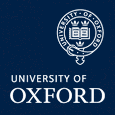Word Clouds
One of the simplest forms of text analysis is to look at word frequency, namely how often a poet uses particular words (compared with another poet for example), outside of common words (such as ‘the’, ‘and’, ‘but’, etc). An emerging way to display the results is in what is known as a ‘word cloud’ whereby, the most common words or shown, and words that are more commonly used appear larger in the cloud.
-
Go to Jonathan Feinberg’s ‘Wordle’ application at http://wordle.net/

-
Click on ‘Create’ at the top of the screen.

We now need a text to analyse. Open up the text file you have downloaded for Isaac Rosenberg (rosenberg.txt) and copy its entire contents and paste it into the window in Wordle headed ‘Paste in a bunch of text’.
Click on the Go button just below the window. The next stage may take a bit of time when you first perform the task.
After the text has been analysed your word cloud will start to appear. For Rosenberg it will look something like this:
 Word Cloud of Rosenberg’s poetry
Word Cloud of Rosenberg’s poetryThe larger the word, the more often Rosenberg uses it in his poetry (the program has excluded common words automatically).
-
Now repeat the analysis for another poet (e.g. copy and paste the text of Wilfred Owen’s poetry into the window and create a new word cloud).
Example: Comparing Owen to Rosenberg what are the similarities? Hint: look for words to do with the body (hands, heart, eyes). Why might this be so? Look for archaic words such as thy, thou, or thee. Again why would a twentieth-century poet use these?
-
Repeat this exercise with the other poets.
Example: Try creating a word cloud of the poet Edward Thomas (thomas.txt). Thomas is generally noted, out of the poets used here, as more ‘pastoral’, i.e. focused on nature and man’s impact on his surroundings. Do we see the same focus on the human body we see in Rosenberg and Owen or are different words appearing now?


